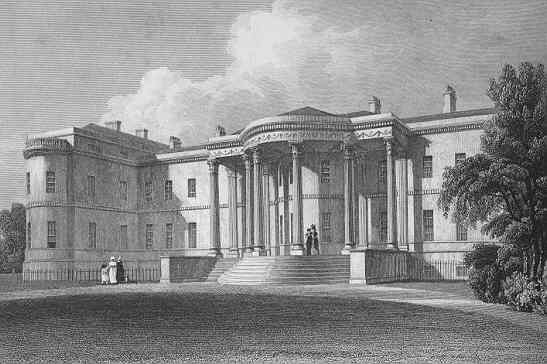Magna Britannia: Bedfordshire, Berkshire, and Buckinghamshire (1813)

1829 engraving of Luton Hoo, as designed by Robert Adam. Two major sets of alterations were made after the image was published.
The Luton Hoo of the Regency era was one of the largest homes Adam designed. His efforts were complimented by the work by Capability Brown, who expanded from 300 acres to 1,200 acres the park. Brown’s redesign included daming the River Lea to form two lakes.
By 1830, the 2nd Marquess would once again redevelop the estate into what we know today as it’s current form. A 1843 fire destroyed much of the house and contents, but was restored in 1848 by John Shaw Leigh.
There is a nice timeline available: The History of Luton … – Google Books









